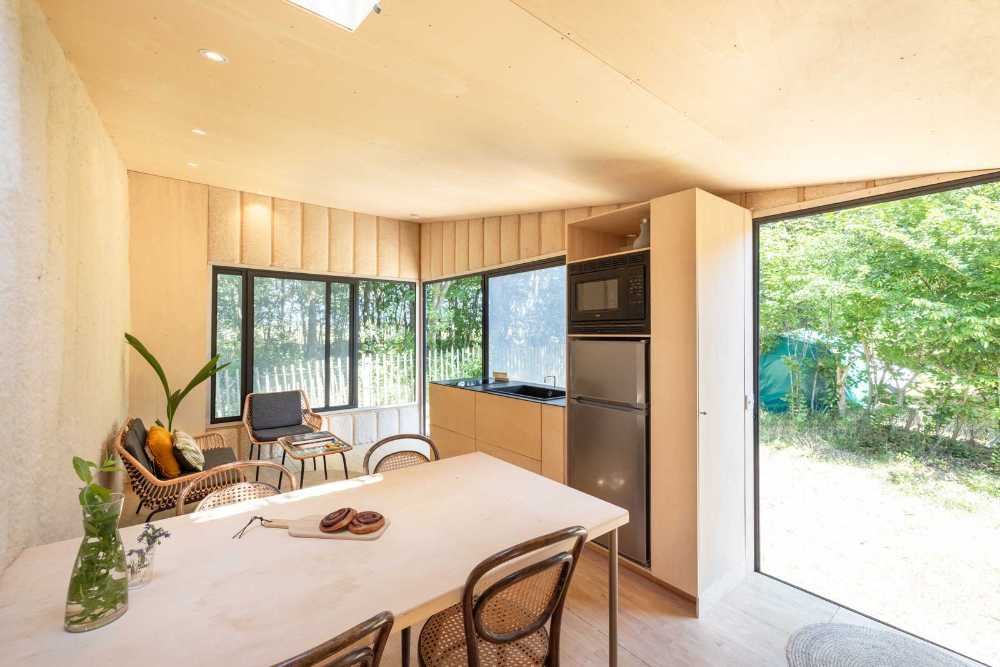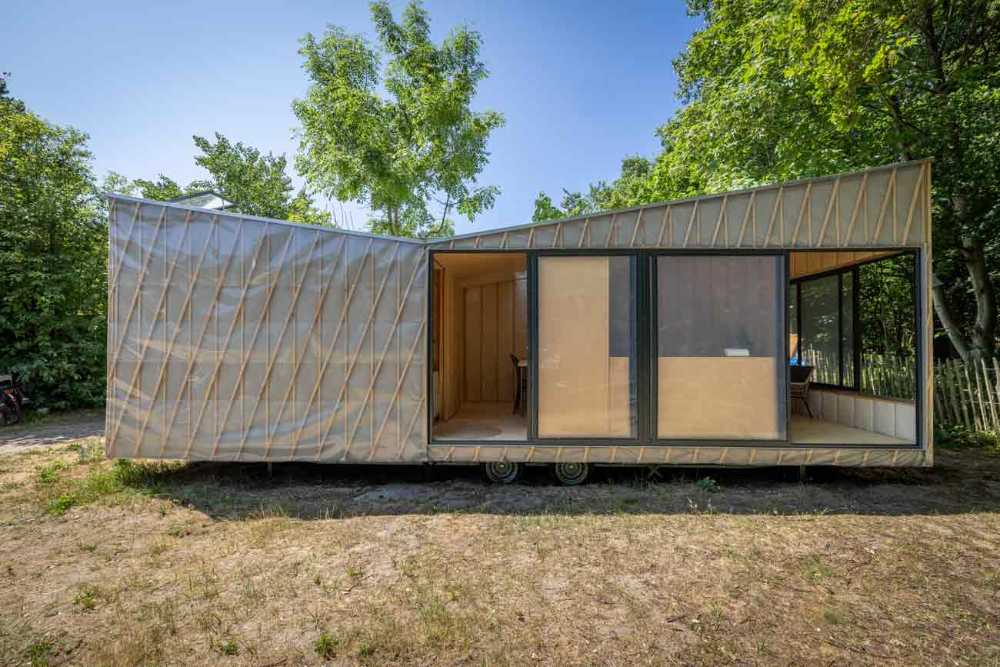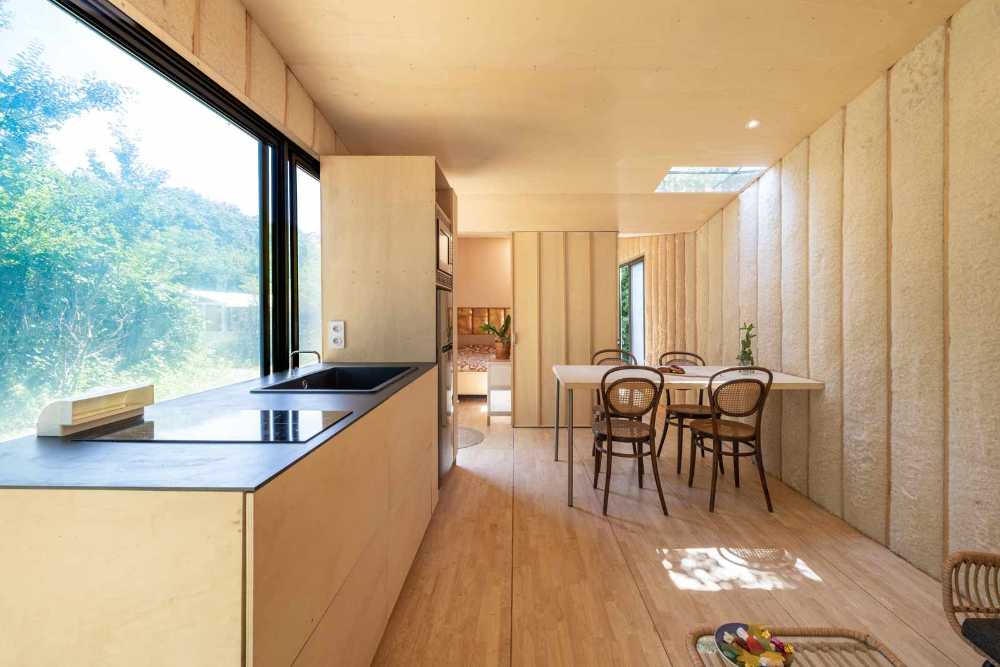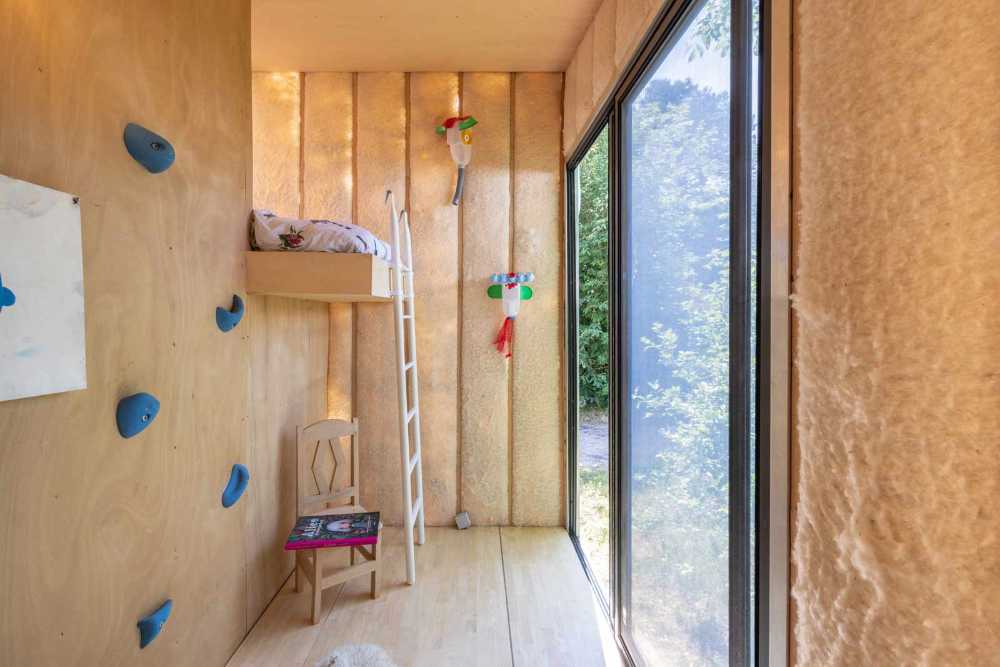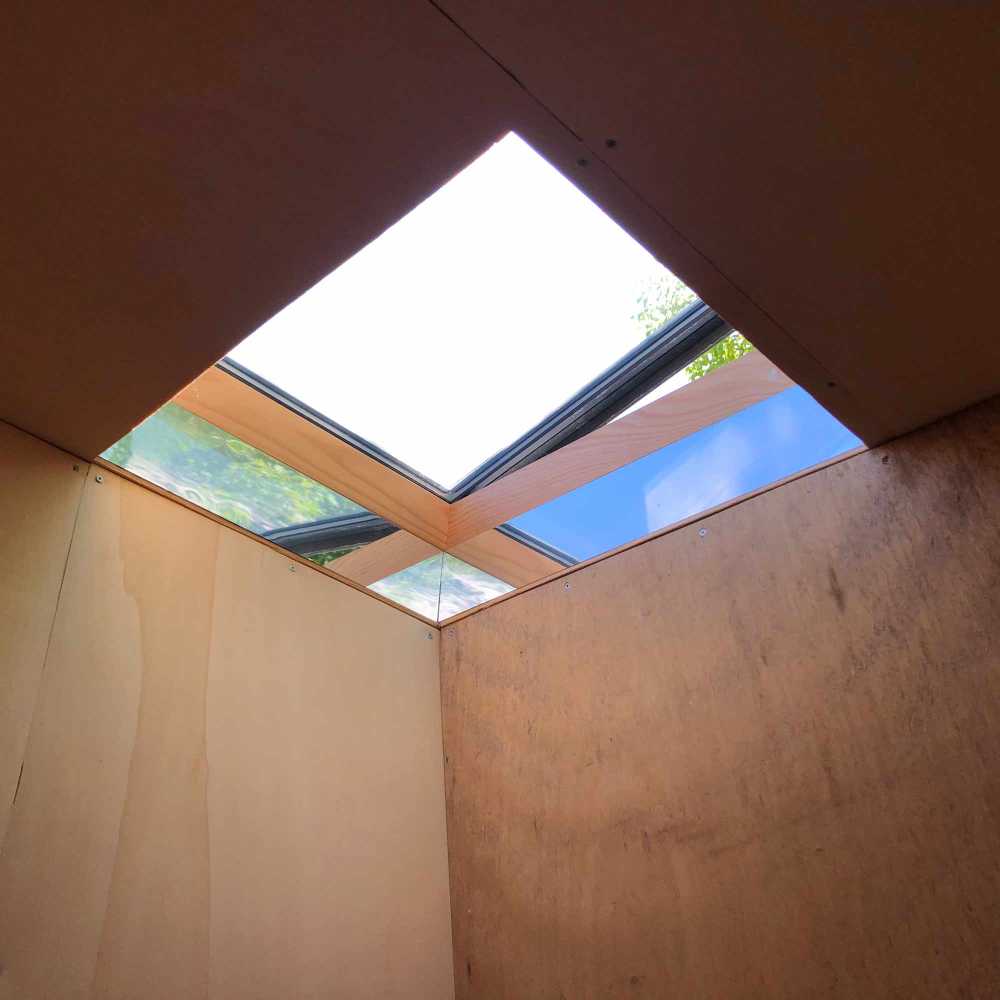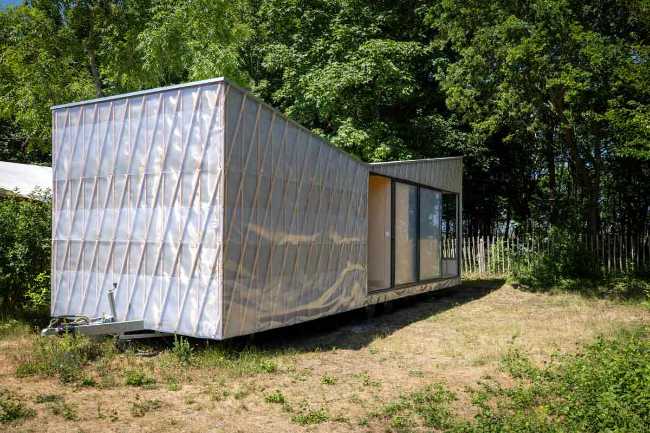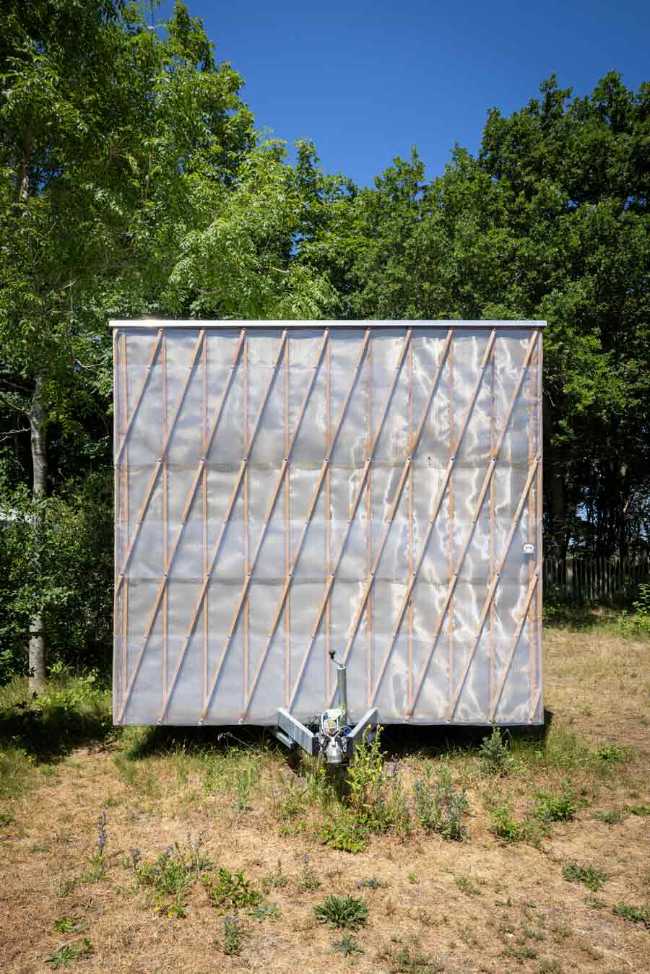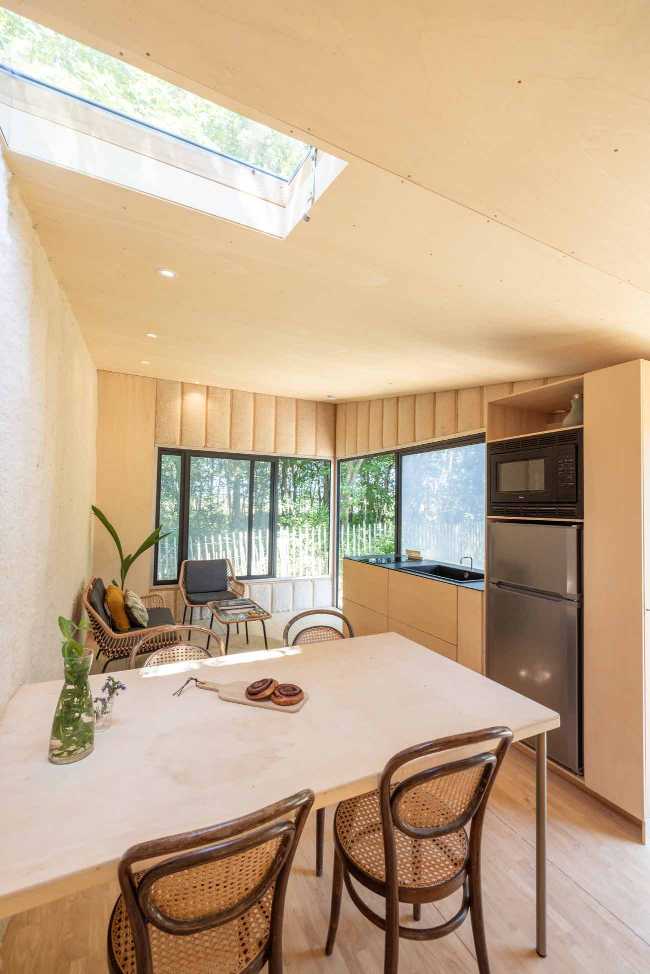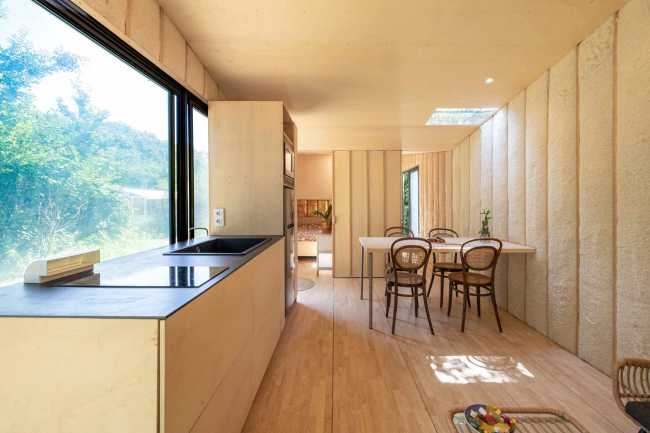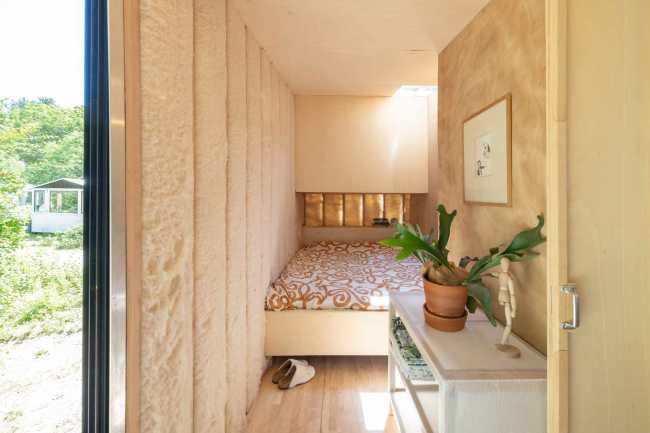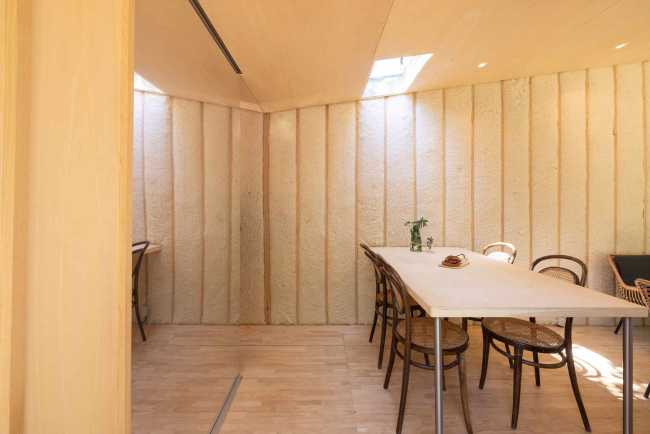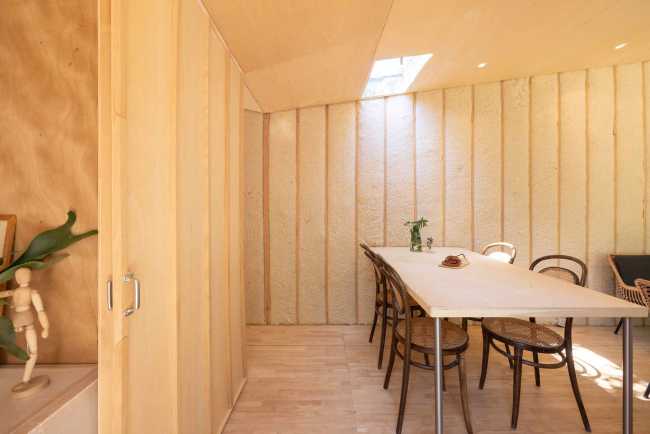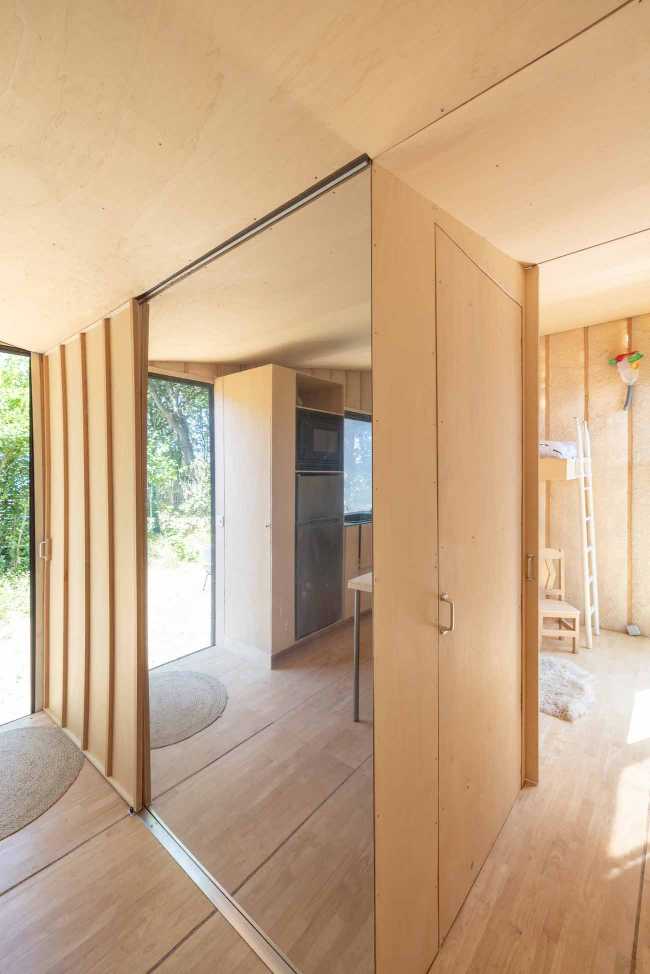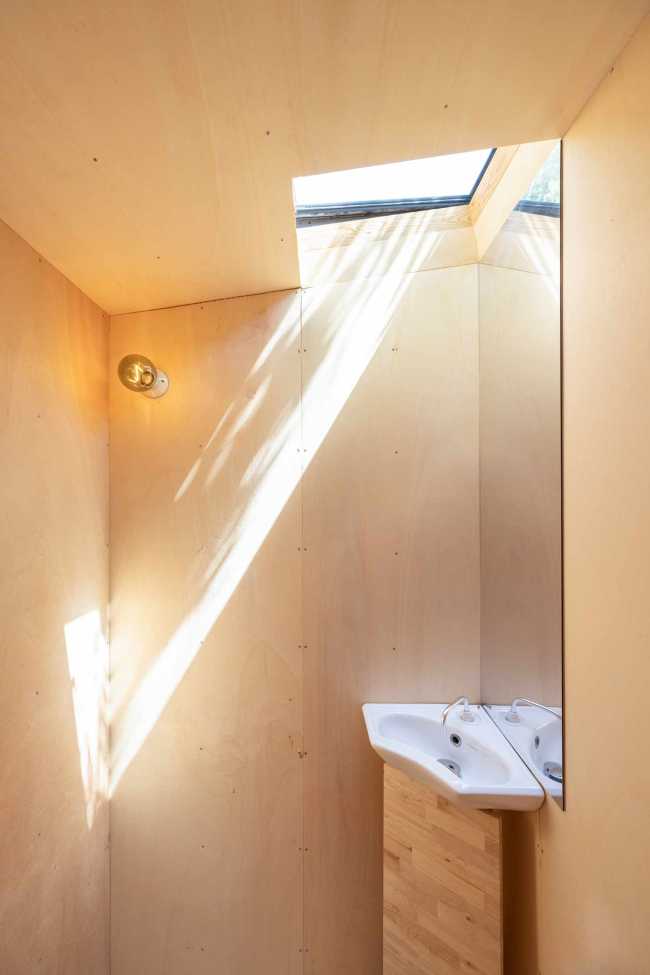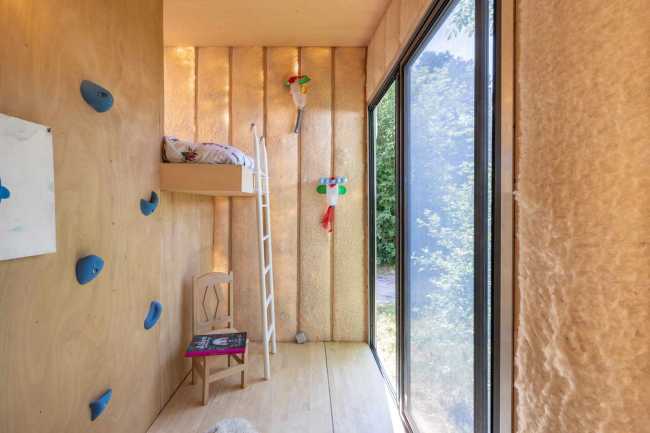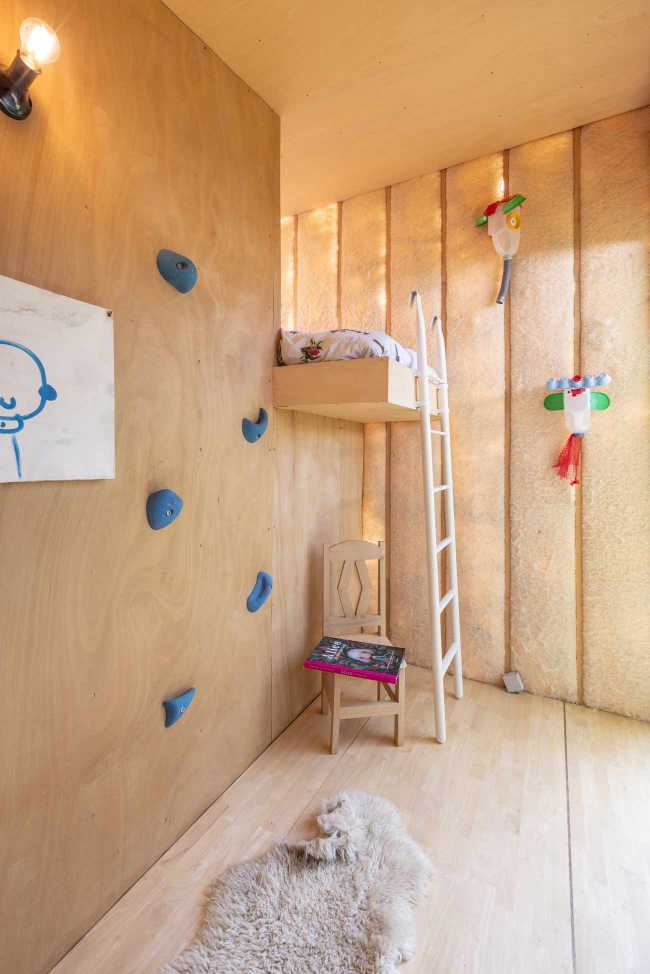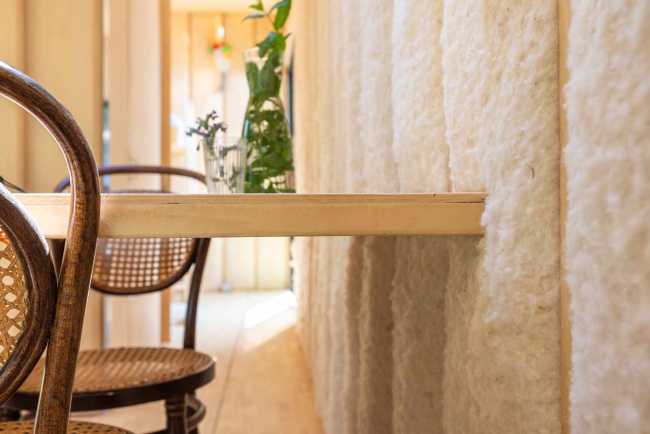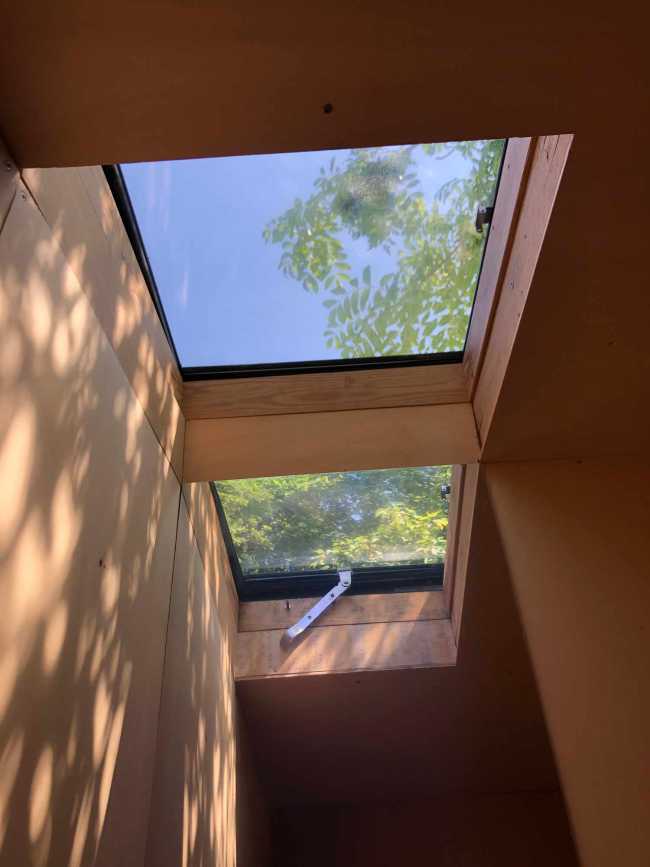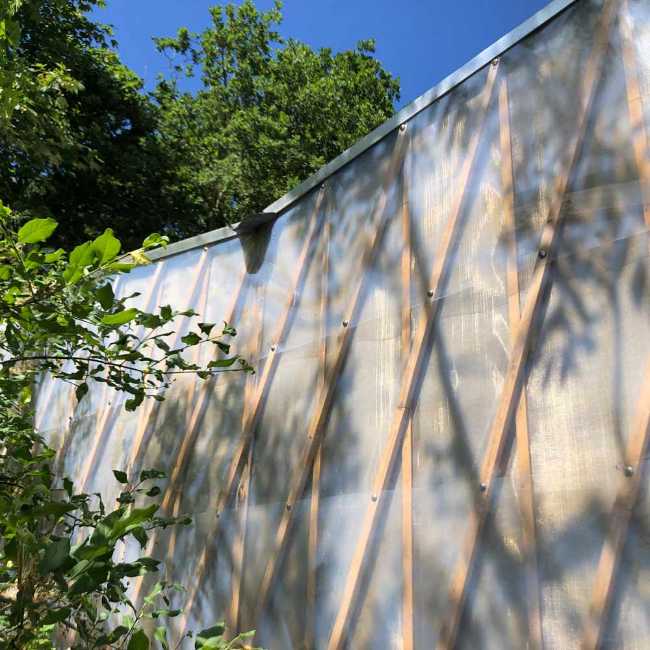A Tiny House in the heart of the Dutch dunes
At the Kennemer Duincamping Bakkum campsite, just a few kilometers from Amsterdam, every autumn the mobile homes are removed to restore the natural landscape to the dunes.
In this context, cc-studio was commissioned to design a 30 m² Tiny House to replace an old steel camper, integrating views towards the coastal dunes into the project.
Having experienced firsthand the thermal discomfort of the existing camper during a scorching summer, the team conceived a building with a breathable envelope, in harmony with the physiology of the human body: an architecture that “breathes”, as comfortable as cotton or Gore-Tex.

